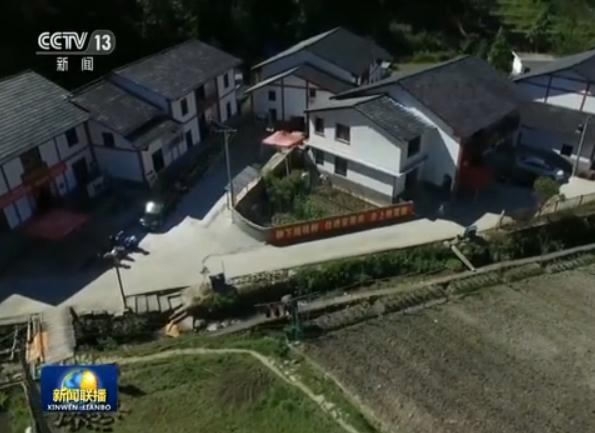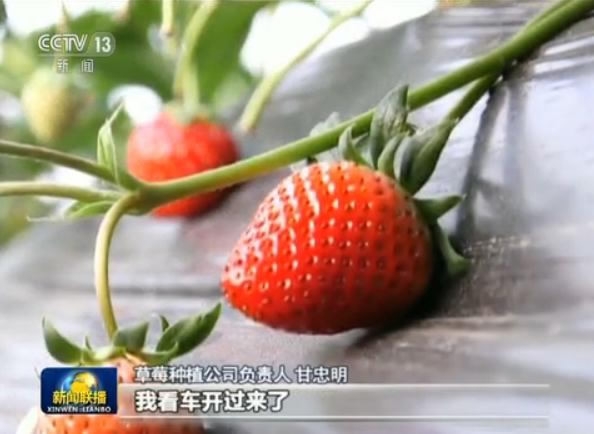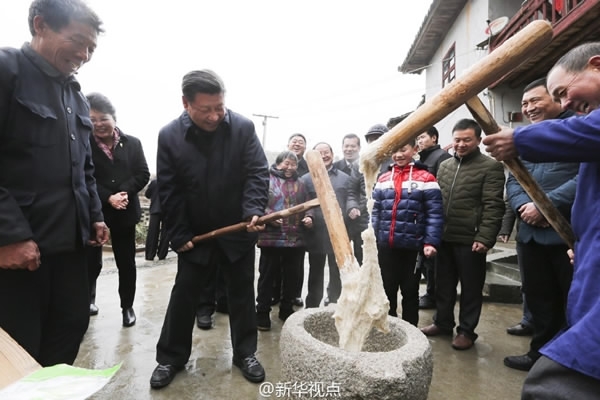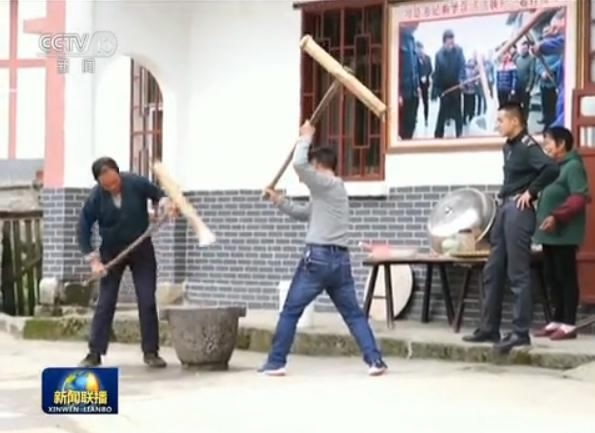Jinggangshan, a county-level city in east China’s Jiangxi Province, has become the first region in the country to be taken off the list of “impoverished counties” since the adoption of a poverty exit mechanism last April.
There are nearly 600 counties across China listed as “impoverished counties.” According to the mechanism, a county will be removed from the list when its residents living under the poverty line account for less than two percent of its population (three percent for western regions). The Chinese government defines poverty as having an income of less than 2,800 yuan (about 400 US dollars) per year.

Jinggangshan in east China's Jiangxi Province has been taken off the list of "impoverished counties." /CCTV Screenshot
By the end of 2016, the proportion of people living under the poverty line in Jinggangshan had fallen to 1.6 percent, lower than the national standard of two percent. Having passed the assessment of the State Council Leading Group Office of Poverty Alleviation and Development and approved by the provincial government of Jiangxi, Jinggangshan was officially deregistered from the list on Sunday.
Jinggangshan’s poor population has fallen from 16,934 in 2014 to 1,417 today. The per capita net income of poor families has grown from 2,600 yuan (about 378 US dollars) in 2013 to more than 4,500 yuan (about 655 US dollars) a year, with the per capita net income of all rural residents in Jinggangshan increasing from 5,857 yuan (about 853 US dollars) to 8,647 yuan (about 1,259 US dollars).

Residents in Jinggangshan grow strawberries in the fight against poverty. /CCTV Screenshot
The local government attributed the success to the national campaign of “precision” poverty relief, which requires precise, targeted and differentiated measures to ensure effective poverty reduction.
Jinggangshan helped people to start their own businesses or find jobs, while providing a safety net for those who were unable. In addition, it helped poor people move into quality homes and improved infrastructure in rural areas.
The government has encouraged poor residents to be part of the city's most successful industries, such as tea, bamboo and fruit plantations and processing, as well as aquafarming.
As the home to the first rural revolutionary base of the Communist Party of China (CPC) established in 1927, Jinggangshan was required to “play a demonstrative and leading role” in the fight against poverty by Chinese President Xi Jinping, who paid a visit to the place in February last year.

Chinese President Xi Jinping helps make the dough for "ciba", a glutinous rice delicacy during a visit to the village of Shenshan in Jinggangshan, Jiangxi Province in February 2016. /Xinhua Photo

Tourists try to make the dough for "ciba", a glutinous rice delicacy in the village of Shenshan in Jinggangshan, Jiangxi Province. /CCTV Screenshot
"Measures and work to alleviate and eliminate poverty must be precise. Policies should be made according to the (needs of) households and individuals," Xi said while visiting households in the village of Shenshan.
More than 700 million Chinese citizens have been lifted out of poverty since the start of China’s reform and opening-up in 1978. According to a poverty alleviation plan issued last year, the government has pledged to lift everybody out of poverty by 2020, which means lifting at least 10 million people out of poverty each year from 2016 to 2020.
1479km










